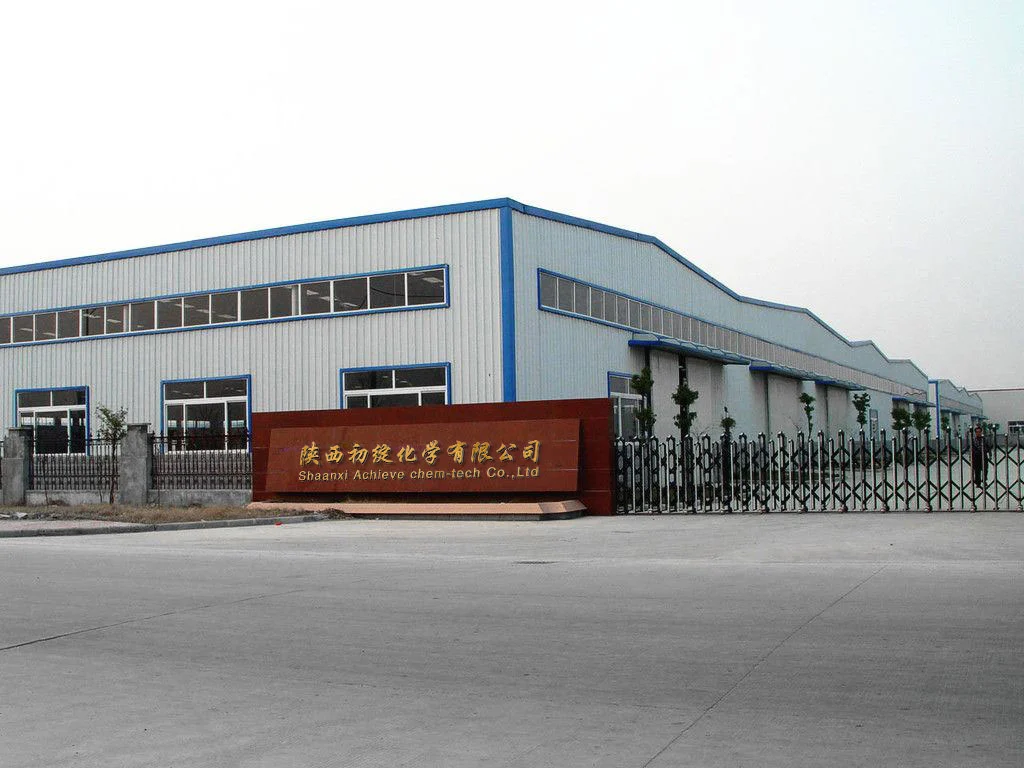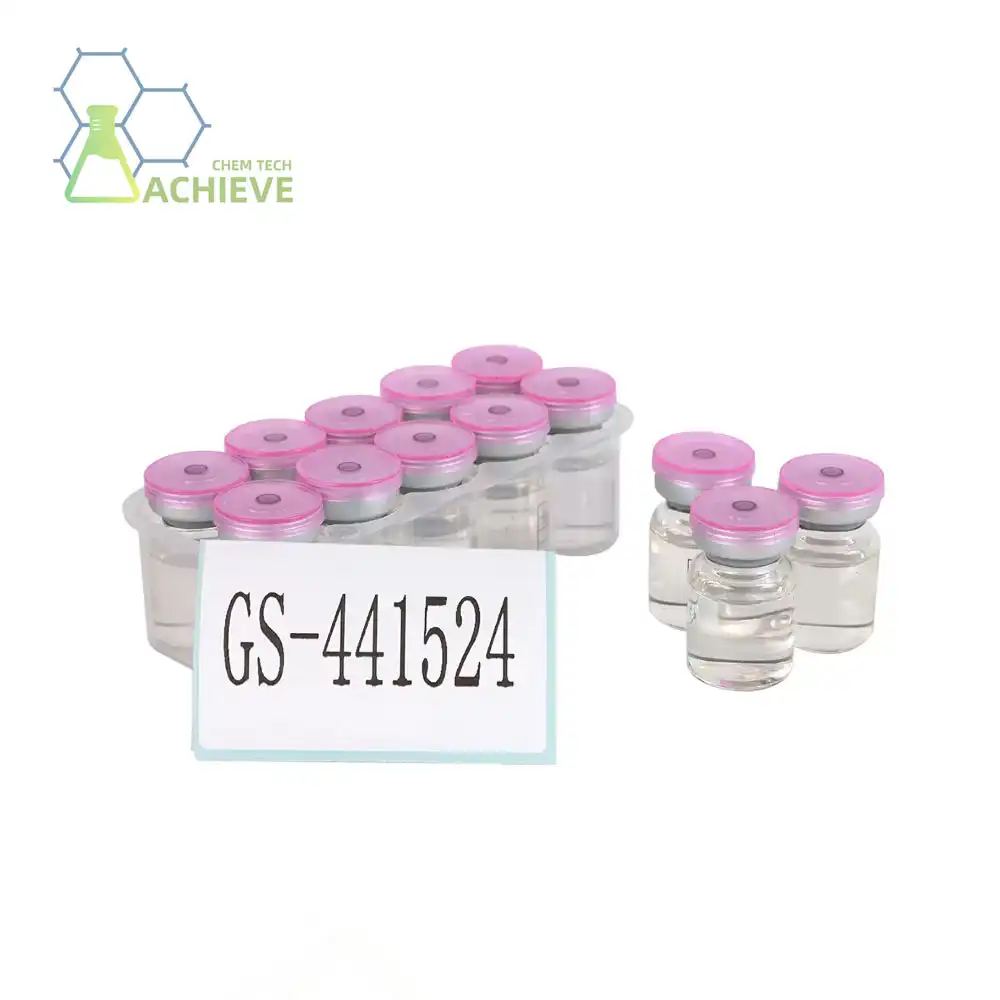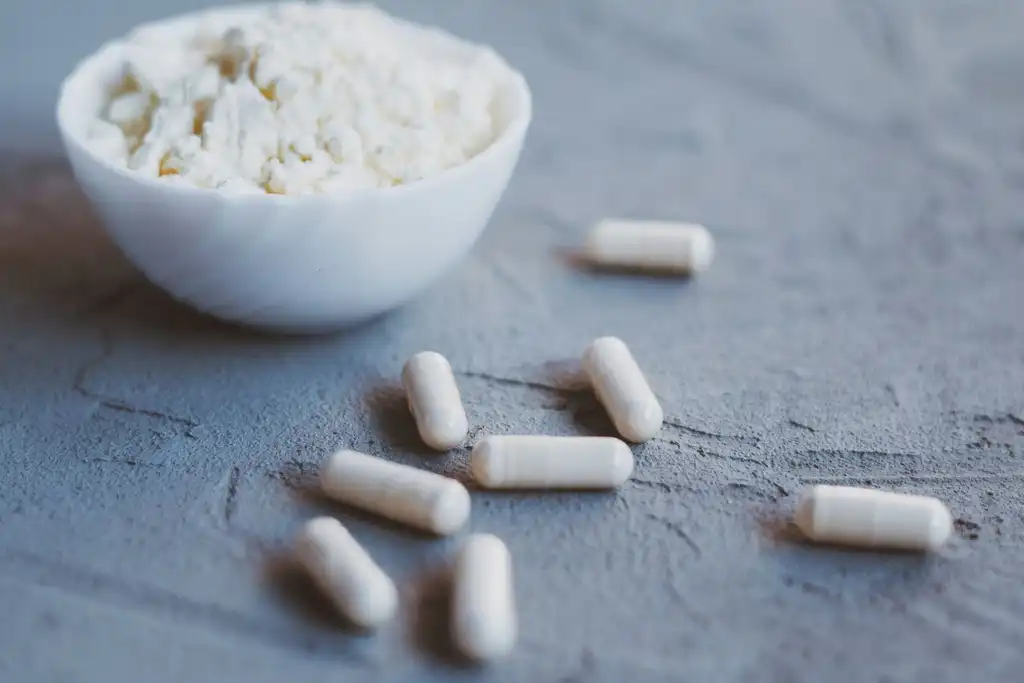How quickly will my cat get better after being treated with GS-441524?
As a cat owner facing the devastating diagnosis of Feline Infectious Peritonitis (FIP), you're likely anxious to know how soon your beloved feline friend will recover after starting treatment with GS 441524 powder. This groundbreaking antiviral medication has shown remarkable success in treating FIP, a previously fatal disease. In this comprehensive guide, we'll explore the typical recovery timeline, early signs of improvement, and factors that influence how quickly cats respond to GS 441524 therapy.
We provide GS 441524 Powder CAS 1191237-69-0, please refer to the following website for detailed specifications and product information.
|
|
|
Typical recovery plan for cats on GS 441524 therapy
The journey to recovery for cats treated with GS 441524 powder or oral formulations typically follows a predictable pattern, though individual experiences may vary. Here's a general timeline of what you can expect:
Week 1-2:
Most cats begin showing initial signs of improvement within the first 24-72 hours of treatment. You may notice increased appetite, improved energy levels, and a fever reduction. For cats with wet FIP, abdominal fluid may start to decrease.
Weeks 3-4:
By this point, many cats experience significant improvements in their overall condition. Appetite continues to increase, and weight gain becomes noticeable. Blood work often shows improvements in key markers such as hematocrit, albumin, and globulin levels.
Weeks 5-8:
Cats typically return to near-normal behavior and activity levels. Physical symptoms of FIP should be largely resolved, and blood work should continue to normalize.
Weeks 9-12:
The standard treatment course for GS 441524 is 12 weeks, though some cats may require longer treatment periods. By the end of treatment, most cats have fully recovered and show no signs of FIP.
Post-treatment:
After completing the treatment course, cats are monitored closely for any signs of relapse. The majority of cats treated with GS-441524 remain in remission long-term.
Early signs of improvement to look for in the first week
The initial days of treatment are crucial, and observing positive changes can provide hope and reassurance. Here are some early signs that indicate your cat is responding well to GS 441524 powder therapy:
- Increased appetite and water intake
- Improved energy levels and playfulness
- Reduction in fever
- Decreased abdominal distension (in wet FIP cases)
- Brighter, more alert demeanor
- Improved coat condition
- Reduced inflammation in the eyes (for cats with ocular FIP)
- Gradual resolution of neurological symptoms (for cats with neurological FIP)
It's important to note that while many cats show rapid improvement, some may take longer to exhibit noticeable changes. Consistent monitoring and communication with your veterinarian are essential throughout the treatment process.
|
|
|
Why some cats respond faster than others to GS 441524 treatment
The speed and extent of recovery can vary among cats treated with FIP pills for cats containing GS-441524. Several factors influence how quickly a cat responds to treatment:
Age of the cat:
Younger cats often respond more rapidly to GS-441524 therapy compared to older cats. Kittens and young adults typically have more robust immune systems, which can aid in their recovery.
Stage and form of FIP:
Cats with wet FIP tend to show more dramatic initial improvements as the effusion resolves. Dry FIP cases may have a more gradual recovery. Cats with neurological or ocular involvement may require higher doses and longer treatment periods.
Overall health status:
Cats with fewer complications or concurrent health issues often respond more quickly to treatment. Those with severe organ damage or secondary infections may have a slower recovery process.
Timing of treatment initiation:
Early diagnosis and prompt treatment generally lead to faster recovery. Cats that start GS 441524 therapy in the early stages of FIP typically respond more rapidly than those with advanced disease.
Dosage and administration:
Proper dosing is crucial for optimal results. Some cats may require dose adjustments based on their response to treatment. The route of administration (injectable vs. oral) can also impact the speed of improvement.
Genetic factors:
Individual genetic variations may influence how efficiently a cat's body metabolizes and responds to GS 441524.
Stress levels:
A calm, supportive home environment can contribute to faster recovery. Stress can impair the immune system and potentially slow down the healing process.
Nutritional support:
Proper nutrition is essential for recovery. Cats that maintain good appetite and receive adequate calories and nutrients tend to improve more quickly.
Understanding these factors can help manage expectations and provide insights into your cat's unique recovery journey. It's important to remember that each cat's experience with GS-441524 treatment is individual, and patience is key.
Monitoring and adjusting treatment:
Regular check-ups and blood work are crucial during the treatment period. Your veterinarian may adjust the dosage or duration of treatment based on your cat's progress. Some cats may require extended treatment beyond the initial 12-week course to achieve complete remission.
Long-term prognosis:
The majority of cats treated with GS-441524 achieve long-term remission from FIP. However, a small percentage may experience relapse, particularly if treatment is stopped prematurely. Ongoing monitoring in the months following treatment completion is essential to ensure lasting recovery.
Supporting your cat's recovery:
While GS-441524 is the primary treatment for FIP, there are several ways you can support your cat's recovery process:
- Provide a stress-free environment
- Ensure proper nutrition with high-quality, palatable food
- Administer medications consistently as prescribed
- Monitor for any changes in behavior or symptoms
- Attend all scheduled veterinary check-ups
- Offer plenty of love and gentle attention
The recovery journey with GS-441524 treatment can be emotionally challenging for cat owners. It's important to celebrate small victories and remain hopeful, as many cats go on to live healthy, happy lives after successful FIP treatment.
Conclusion
GS441524 has revolutionized the treatment of FIP, offering hope to cats and their owners facing this once-fatal disease. While the speed of recovery can vary, most cats show significant improvement within the first few weeks of treatment. By understanding the typical recovery timeline and factors influencing response to therapy, you can better support your feline companion through their health journey.
For pharmaceutical companies and research institutions seeking high-quality GS 441524 powder for feline studies or drug development, Shaanxi BLOOM TECH Co., Ltd. offers premium-grade products manufactured in our GMP-certified facilities. Our advanced purification techniques, including high vacuum distillation and recrystallization, ensure the highest purity and efficacy of our compounds. To learn more about our chemical synthesis capabilities or to inquire about bulk orders of GS-441524 and other specialized chemicals, please contact our sales team at Sales@bloomtechz.com. BLOOM TECH is committed to supporting advancements in veterinary medicine and the ongoing fight against FIP through the production of high-quality pharmaceutical intermediates.
References
1. Pedersen, N.C., et al. (2019). Efficacy and safety of the nucleoside analog GS-441524 for treatment of cats with naturally occurring feline infectious peritonitis. Journal of Feline Medicine and Surgery, 21(4), 271-281.
2. Murphy, B.G., et al. (2020). Treatment of cats with feline infectious peritonitis with GS-441524 using a novel subcutaneous formulation. Animals, 10(6), 1066.
3. Addie, D.D., et al. (2020). Feline infectious peritonitis. ABCD guidelines on prevention and management. Journal of Feline Medicine and Surgery, 22(11), 1028-1048.
4. Dickinson, P.J., et al. (2020). Antiviral treatment of cats with naturally occurring feline infectious peritonitis using the adenosine nucleoside analogue GS-441524. Journal of Veterinary Internal Medicine, 34(3), 1287-1295.

Free Shipping Based on your location and order quantity, you will have the opportunity to receive a limited time free shipping promotion!

BLOOMTECHZ







